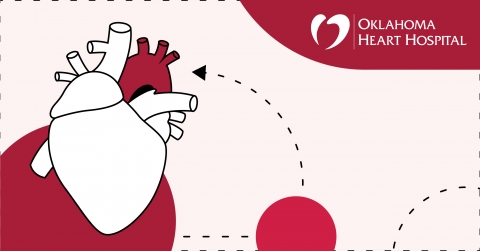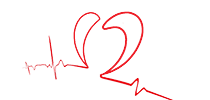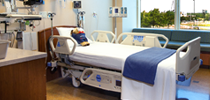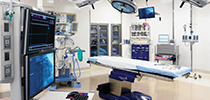Aortic Aneurysm

The aorta is the main artery that carries oxygen-rich blood from the heart to the rest of the body. In an aortic aneurysm, part of the aorta develops a bulge. Much like an over-filled balloon, the aorta wall becomes thinner in that area and at risk for dissection or rupture.
The aorta runs through both the chest and the stomach and delivers blood to major organs, such as the brain, kidneys, liver, and intestines. Aortic aneurysms are categorized according to the part of the aorta it affects. An abdominal aneurysm, which happens in the stomach cavity, is the most common. Thoracic aortic aneurysms occur in the chest.
Aortic aneurysm carries the risk of rupture and internal bleeding. Another potential complication is a tear in the wall of the aorta that does not completely rupture. This tear creates a secondary tunnel for blood between layers of the aorta’s walls. This can cut off blood flow to organs, which can cause heart attack, stroke, or organ failure.
A person might not have symptoms of an aortic aneurysm until a rupture has occurred. The symptoms that do occur depend on the location and severity of the bulge, specifically, the pressure it places on surrounding tissues. Pressure to the esophagus may produce pain when swallowing. Pressure near the stomach may produce a full feeling, despite not eating. Pain also may occur near the site of the bulge.
What causes aortic aneurysm?
While the cause of some aortic aneurysms is unknown, these potential causes have been identified:
- Structural genetic abnormalities such as Marfan syndrome or a bicuspid aortic valve. In these situations, the aorta did not form correctly.
- Atherosclerosis, or narrowing of the arteries, often due to heart disease and lifestyle factors.
- Infection
- Injury to the aorta
How is it treated?
Treatment for aortic aneurysm depends on the location and extent of the aneurysm. Treatment for small aneurysms may include routine monitoring and lifestyle changes that could slow the growth. Medications to lower cholesterol, improve blood flow, and lower blood pressure may also be part of a treatment plan. Eventually, most aneurysms need surgical repair. For some aneurysms, a minimally invasive catheter procedure can reinforce the artery. In other cases, open aortic surgery is required for the damaged section of the aorta to be removed and replaced with a graft.
What are risk factors for aortic aneurysm?
Men have a higher risk of aortic aneurysm than women, and the risk increases with age for both men and women. Other risk factors for aortic aneurysm include:
- Genetic conditions
- History of smoking
- Sustained high blood pressure
- Family history of aortic aneurysm
If you have risk factors for aortic aneurysm, reach out to the team at Oklahoma Heart Hospital to schedule a screening today. Early diagnosis and treatment to slow the growth can prevent serious and life-threatening complications.




